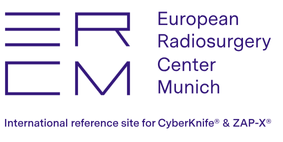SPONSORSHIP ALLIANCE NEWS



More than 300 people came together for the Leksell Gamma Knife Society Meeting in Stockholm from October 19-21, 2025, chaired by this year's Scientific President Dr Veronica Chiang, director of the Gamma Knife Center at Yale New Haven Hospital. Innovators, scientists, and clinicians from more than 45 countries participated in three days of learning and networking to discuss the future of radiosurgery. The topics covered ranged from Biologically Effective Dose (BED) and AI applications to immobilization techniques and indication-specific deep dives. The future looks promising, especially with five individuals receiving the Young Investigator Award for their outstanding abstracts in various categories. Combining science and technology with passion for people to live longer, this incredible event builds on the momentum to shape the next 50 years of radiosurgery.
This year, this dedicated and pioneering community also celebrated that together they have treated more than two million patients with Leksell Gamma Knife. Read more at the link provided.

As the sponsor of the meeting, Vision RT announces that abstracts are open for the 2026 US SGRT Community Meeting in Orlando, FL. This 10th anniversary of the meeting will be hosted at the Hilton Orlando Lake Buena Vista, across the street from Disney Springs®, on May 7-8, 2026. We invite you to submit on any surface guidance topic through the Simulation, Planning, Treatment and Dose Visualization steps. Travel grants are available for successful submissions, and the abstract window will close on Thursday, January 15, 2026. Attendance to this event will be completely FREE and 100% peer-driven, with all sessions and talks delivered by SGRT users. The two-day event will be made up of an on-site visit to an SGRT expert clinic, presentations, workshops, and the latest innovations.

Brain tumors are the most common solid neoplasms in pediatric patients. However, treatment options remain limited in cases of local recurrence, metastasis, or inoperability. Stereotactic radiosurgery (SRS) offers a potential treatment option in these scenarios. This multicenter study reviews the indications and outcomes of SRS in treating pediatric central nervous system (CNS) lesions.
Adrenal metastases are frequently diagnosed in patients with common solid tumors. Surgical adrenalectomy has historically been used for their management. However, stereotactic body radiation therapy (SBRT) has emerged as a safe and effective alternative. Careful treatment planning is essential, considering multiple factors such as tumor size and location, motion management, dose and fractionation, and proximity to adjacent organs at risk. This case-based practice guide and review provides an overview of SBRT for the management of adrenal tumors, with a particular focus on adrenal metastases.
While SABR is associated with excellent local control of primary renal cell carcinoma (RCC), outcomes based on clear cell RCC (ccRCC) and non-clear cell RCC (nccRCC) histologies are not well defined. This retrospective study's objective is to report the outcomes following SABR for uncommon subtypes of primary RCC.

A radiation oncologist’s breakthrough in delivering ultra-fast radiation may make cancer treatment more effective—and less damaging.
Stanford’s Department of Radiation Oncology is breaking new ground in cancer treatment with RefleXion's technology. This technology utilizes positron emission tomography (PET) imaging to deliver precise, targeted radiation therapy. Spearheaded by Lucas Vitzthum, MD, Clinical Associate Professor of Radiation Oncology, and Murat Surucu, PhD, Clinical Professor of Radiation Oncology and Chief of Clinical Physics, this approach allows for real-time tracking of tumors during treatment.

Renowned award recognizes ZAP-Axon for its transformative impact in making dedicated SRS planning simpler, faster, and more precise. (The ZAP-Axon Radiosurgery Planning System is currently pending US FDA 510(k) clearance and EU CE mark declaration ZAP-Axon). Learn More here.
Comprehensive cross-platform analyses of radiosurgery dose spill to uninvolved brain tissue when treating multiple brain metastases shows dedicated cranial radiosurgery devices far more effectively minimize exposure compared to multi-purpose radiotherapy systems. Learn More here.

Join us on the ERCM Medicine Podcast for a conversation with John R. Adler Jr., MD, the visionary inventor of the CyberKnife and founder of Zap-X. As a Stanford professor, Dr. Adler has revolutionized neurosurgery through the development of robotic radiosurgery systems.

Varian, a Siemens Healthineers company, has announced the successful completion of enrollment and treatment in its FAST-02 (Flash Radiotherapy for the Treatment of Symptomatic Bone Metastases in the Thorax) clinical trial. The FAST-02 study targets painful bone metastases in the thoracic region and represents a significant step toward bringing this investigational radiotherapy treatment into clinical practice.

Despite decades of proven outcomes and its status as the most common neurosurgical procedure for brain tumors in the U.S., many neurosurgeons still resist embracing SRS.
In Dr. John Adler's just-published editorial, he calls for neurosurgeons to reclaim leadership in radiosurgery, not only to advance the specialty but to ensure patients worldwide receive the best possible care.
A new Maxillary Sinus Squamous Cell Carcinoma case report highlighting the feasibility and potential efficacy of ZAP-X Gyroscopic Radiosurgery as a non-invasive alternative to surgery.
Maximum dose of 90 Gy covering a 5-mm segment of the trigeminal nerve using a single isocenter. Median treatment time was 37 minutes. Median V12 and V10 of the brainstem were 0.04cc and 0.07cc, respectively.
Early results are encouraging and support the use of ZAP-X as a safe, effective, and minimally invasive treatment option for patients with refractory trigeminal neuralgia.
Despite decades of clinical success, access to state-of-the-art SRS remains limited for millions of patients worldwide - even within the most advanced healthcare systems. Join Dr. John Adler and Dr. Alexander Muacevic as they discuss this critical challenge.
Hackensack Meridian Jersey Shore University Medical Center Marks Milestone Treatment Using Pain-Free, Incision-Free Brain Surgery Technology

In just 24 months, Elekta has achieved its 30th Esprit installation across the Americas and over 50 worldwide since its 2022 launch, expanding global access to precision radiosurgery. Leksell Gamma Knife continues to lead the way with mask-based and frame-based options, superior precision for benign and functional indications, and the industry’s lowest extracranial dose. As demand grows for repeat radiosurgery, AI integration, and efficient, personalized treatments, Elekta is shaping the future of patient-centered care.
Read the full article to see how we’re redefining brain radiosurgery for the next generation of clinicians and patients.
Elekta recently announced that it has received U.S. Food and Drug Administration (FDA) 510(k) clearance to include refractory, intractable mesial temporal lobe epilepsy (MTLE) in adults among its indications for use with the company’s Leksell Gamma Knife radiosurgery system. Gamma Knife surgery treats refractory, drug-resistant MTLE by precisely focusing 192 beams of gamma radiation to target and disrupt the exact region of the brain responsible for epileptic seizures, potentially reducing frequency or eliminating them without opening the skull. Read more about this exciting announcement at www.elekta.com/gammaknife. Leksell Gamma Knife has U.S. FDA 510(k) clearance for the new indication of “drug resistant epilepsy” with limited global availability.

Stereotactic radiosurgery is gaining importance in treating localized prostate cancer. In this expert interview, Prof. Dr. med. Alexander Muacevic (Director, ERCM Munich), speaks with Dr. Jonathan A. Haas, MD (Director, Radiation Oncology, NYU Grossman School of Medicine, Long Island), a leading CyberKnife pioneer, who provides valuable insights.

DICKSON CITY, Pa. – Geisinger officials, employees and community partners gathered for a ribbon-cutting ceremony on Thursday, June 19, to celebrate the impending opening of a new state-of-the-art cancer center. Geisinger Cancer Center Dickson City, expected to see its first patients on June 23, will expand cancer services, offer more appointments in the community and keep care closer to home for the residents of Lackawanna County.
Planning for the cancer center was driven by research that showed cancer-related visits are expected to increase in Geisinger’s northeast region by 7% between 2022 and 2032, and demand for chemotherapy is expected to grow by more than 9% between 2022 and 2027.

Casablanca’s Ibn Sina Medical Center will install ZAP-X in summer 2025 and begin treatments in early fall.
Pioneering Technology Offers State-of-the-Art Non-Invasive Alternative to Open Brain Surgery

As the inventors of, and market leaders in Surface Guided Radiation Therapy (SGRT), Vision RT has been working to increase awareness of the clinical benefits of surface guidance with the Centers for Medicare & Medicaid Services (CMS), the American Medical Association (AMA) and ASTRO. As written, the 2026 Medicare Physician Fee Schedule (MPFS) Proposed Rule, indicates that “active motion management” (a functionality of SGRT) could qualify treatment as the Level 3 Complex code, with potentially higher reimbursement per fraction. Learn more and watch the recent webinar featuring Sally Eggleston, a radiation oncology consulting and billing expert from Radiation Business Solutions.

Innovative Rural Treatment Center in Paraguay Showcases State-of-the-Art Non-Invasive Brain Tumor Therapy
Read the latest article from Dr. Raj Singh et al. from The Ohio State University Comprehensive Cancer Center. The authors report on local control (LC), toxicity, and overall survival (OS) following stereotactic ablative radiation therapy (SABR) for extracranial metastases from malignant melanoma.
Read the latest article in MReadings by Joshua Kim et al from Henry Ford Health Department of Radiation Oncology. Dr. Kim's work demonstrates the 0.55T MAGNETOM Free.Max RT Edition, when used with an optimized imaging protocol that includes 3D T1 FLASH and 3D T2 FLAIR SPACE sequences, provides image quality sufficient for target and OAR delineation in stereotactic radiotherapy planning. Total protocol times are clinically acceptable, demonstrating that this low-field MR system is a viable and valuable option for MR simulation in radiotherapy.

Watch the latest Spilling the RT episode with Dr. Arjun Sahgal, a world-renowned radiation oncologist. In this episode, Dr. Sahgal shares inspiring progress around the initial results of the UNITED (Unity-Based MR-Linac Guided Adaptive Radiotherapy for High Grade Glioma) trial. UNITED is the world’s first adaptive MR-guided radiotherapy study for patients with high-grade gliomas, the most common and aggressive primary brain tumors found in adults, and the highlight of his illustrious career so far. Listen here: Breakthrough in high-grade glioma cancer treatment | Dr. Arjun Sahgal on Spilling the RT - YouTube

We’ve just launched a new online resource created specifically for patients and families navigating treatment for brain cancer and other cranial conditions.Learn more about ZAP-X® Gyroscopic Radiosurgery® and what to expect—presented in a simple, supportive way to guide patients through every step of the journey.